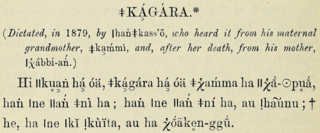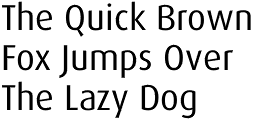Related Research Articles
A diacritic is a glyph added to a letter or to a basic glyph. The term derives from the Ancient Greek διακριτικός, from διακρίνω. The word diacritic is a noun, though it is sometimes used in an attributive sense, whereas diacritical is only an adjective. Some diacritics, such as the acute ( ◌́ ) and grave ( ◌̀ ), are often called accents. Diacritics may appear above or below a letter or in some other position such as within the letter or between two letters.

The International Phonetic Alphabet (IPA) is an alphabetic system of phonetic notation based primarily on the Latin script. It was devised by the International Phonetic Association in the late 19th century as a standardized representation of speech sounds in written form. The IPA is used by lexicographers, foreign language students and teachers, linguists, speech–language pathologists, singers, actors, constructed language creators, and translators.

The Standard Alphabet is a Latin-script alphabet developed by Karl Richard Lepsius. Lepsius initially used it to transcribe Egyptian hieroglyphs in his Denkmäler aus Ägypten und Äthiopien and extended it to write African languages, published in 1854 and 1855, and in a revised edition in 1863. The alphabet was comprehensive but was not used much as it contained a lot of diacritic marks and was difficult to read and typeset at that time. It was, however, influential in later projects such as Ellis's Paleotype, and diacritics such as the acute accent for palatalization, under-dot for retroflex, underline for Arabic emphatics, and the click letters continue in modern use.
The double acute accent is a diacritic mark of the Latin and Cyrillic scripts. It is used primarily in Hungarian, and consequently it is sometimes referred to by typographers as hungarumlaut. The signs formed with a regular umlaut are letters in their own right in the Hungarian alphabet—for instance, they are separate letters for the purpose of collation. Letters with the double acute, however, are considered variants of their equivalents with the umlaut, being thought of as having both an umlaut and an acute accent.

Ö, or ö, is a character that represents either a letter from several extended Latin alphabets, or the letter "o" modified with an umlaut or diaeresis. In many languages, the letter "ö", or the "o" modified with an umlaut, is used to denote the close or open-mid front rounded vowels or. In languages without such vowels, the character is known as an "o with diaeresis" and denotes a syllable break, wherein its pronunciation remains an unmodified.

Ä is a character that represents either a letter from several extended Latin alphabets, or the letter A with an umlaut mark or diaeresis.
Finnish orthography is based on the Latin script, and uses an alphabet derived from the Swedish alphabet, officially comprising twenty-nine letters but also including two additional letters found in some loanwords. The Finnish orthography strives to represent all morphemes phonologically and, roughly speaking, the sound value of each letter tends to correspond with its value in the International Phonetic Alphabet (IPA) – although some discrepancies do exist.
An African reference alphabet was first proposed in 1978 by a UNESCO-organized conference held in Niamey, Niger, and the proposed alphabet was revised in 1982. The conference recommended the use of single letters for a sound instead of using two or three-letter combinations, or letters with diacritical marks.

The alphabet for Modern English is a Latin-script alphabet consisting of 26 letters, each having an upper- and lower-case form. The word alphabet is a compound of the first two letters of the Greek alphabet, alpha and beta. The alphabet originated around the 7th century CE to write Old English from Latin script. Since then, letters have been added or removed to give the current letters:

A digraph or digram is a pair of characters used in the orthography of a language to write either a single phoneme, or a sequence of phonemes that does not correspond to the normal values of the two characters combined.
German orthography is the orthography used in writing the German language, which is largely phonemic. However, it shows many instances of spellings that are historic or analogous to other spellings rather than phonemic. The pronunciation of almost every word can be derived from its spelling once the spelling rules are known, but the opposite is not generally the case.
The first Slovak orthography was proposed by Anton Bernolák (1762–1813) in his Dissertatio philologico-critica de litteris Slavorum, used in the six-volume Slovak-Czech-Latin-German-Hungarian Dictionary (1825–1927) and used primarily by Slovak Catholics.
The Nuer language is a Nilotic language of the Western Nilotic group. It is spoken by the Nuer people of South Sudan and in western Ethiopia. The language is very similar to Dinka and Atuot.
Some English language terms have letters with diacritical marks. Most of the words are loanwords from French, with others coming from Spanish, Portuguese, German, or other languages. The diaeresis mark, the grave accent and the acute accent are the only diacritics native to Modern English, and their usage has tended to fall off except in certain publications and particular cases.
In phonology, hiatus, diaeresis, or dieresis describes the occurrence of two separate vowel sounds in adjacent syllables with no intervening consonant. When two vowel sounds instead occur together as part of a single syllable, the result is called a diphthong.
The diaeresis and the umlaut are two different diacritical marks that look alike. They both consist of two dots ¨ placed over a letter, usually a vowel; when that letter is an i or a j, the diacritic replaces the tittle: ï. In computer systems, both forms have the same code point. Their appearance in print or on screen may vary between typefaces but rarely within the same typeface.

The Latin script, also known as Roman script, is an alphabetic writing system based on the letters of the classical Latin alphabet, derived from a form of the Cumaean Greek version of the Greek alphabet used by the Etruscans. Several Latin-script alphabets exist, which differ in graphemes, collation and phonetic values from the classical Latin alphabet.
The Occitan alphabet consists of the following 23 Latin letters:
Various letters have been used to write the click consonants of southern Africa. The precursors of the current IPA letters, ⟨ǀ ǁ ǃ ǂ⟩, were created by Karl Richard Lepsius and used by Wilhelm Bleek and Lucy Lloyd, who added ⟨ʘ⟩.
References
- ↑ "Dinka language, alphabet and pronunciation". Omniglot.com. Retrieved 2016-08-04.
- ↑ "Agamlöŋ Online : Dinka language : Introduction". Archived from the original on 2011-06-05. Retrieved 2011-02-16.